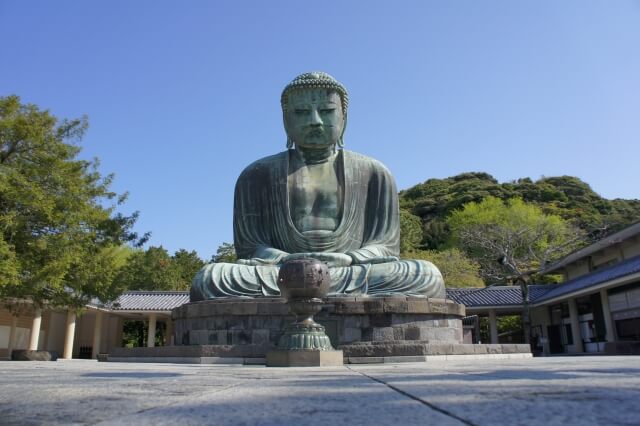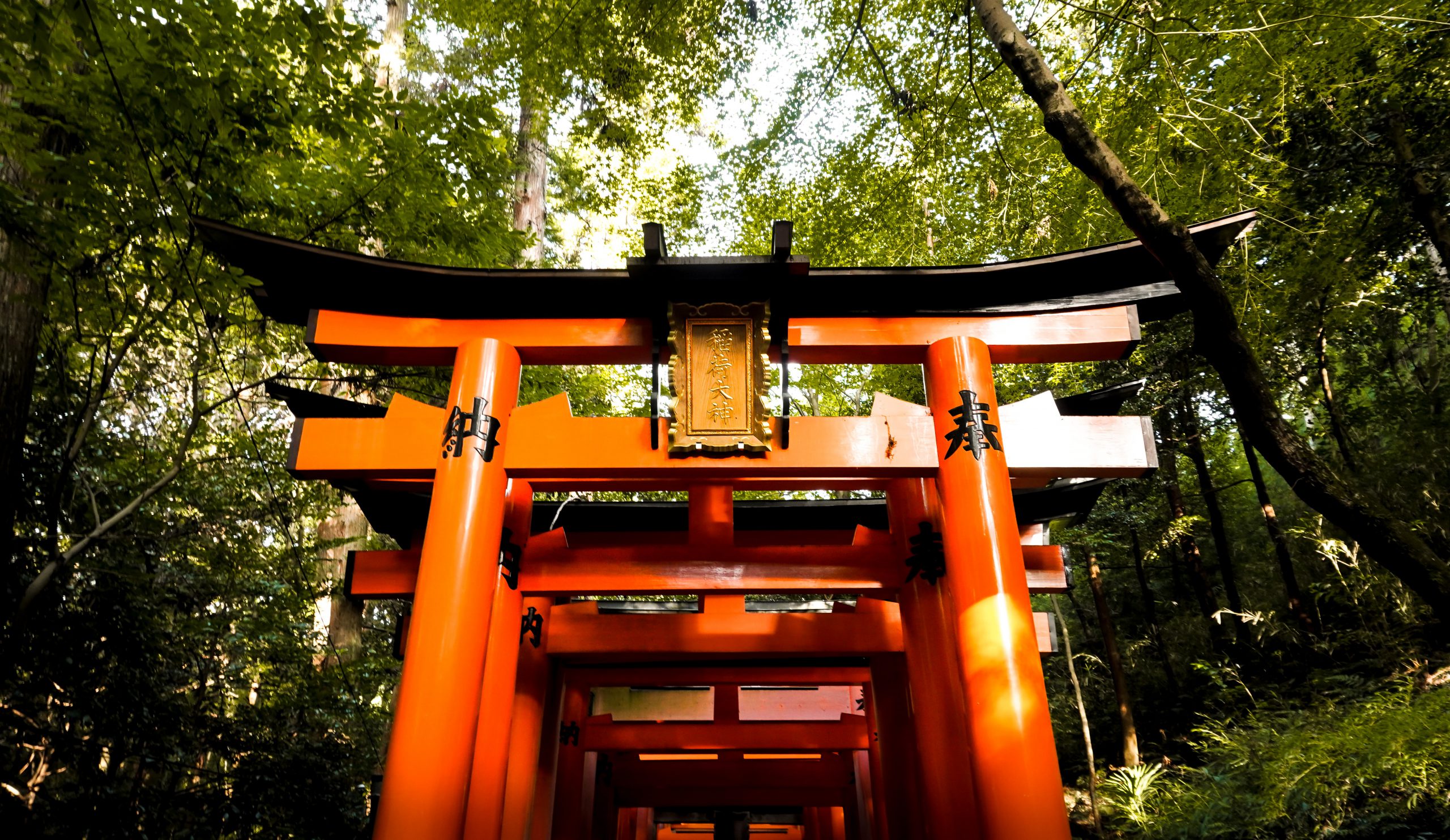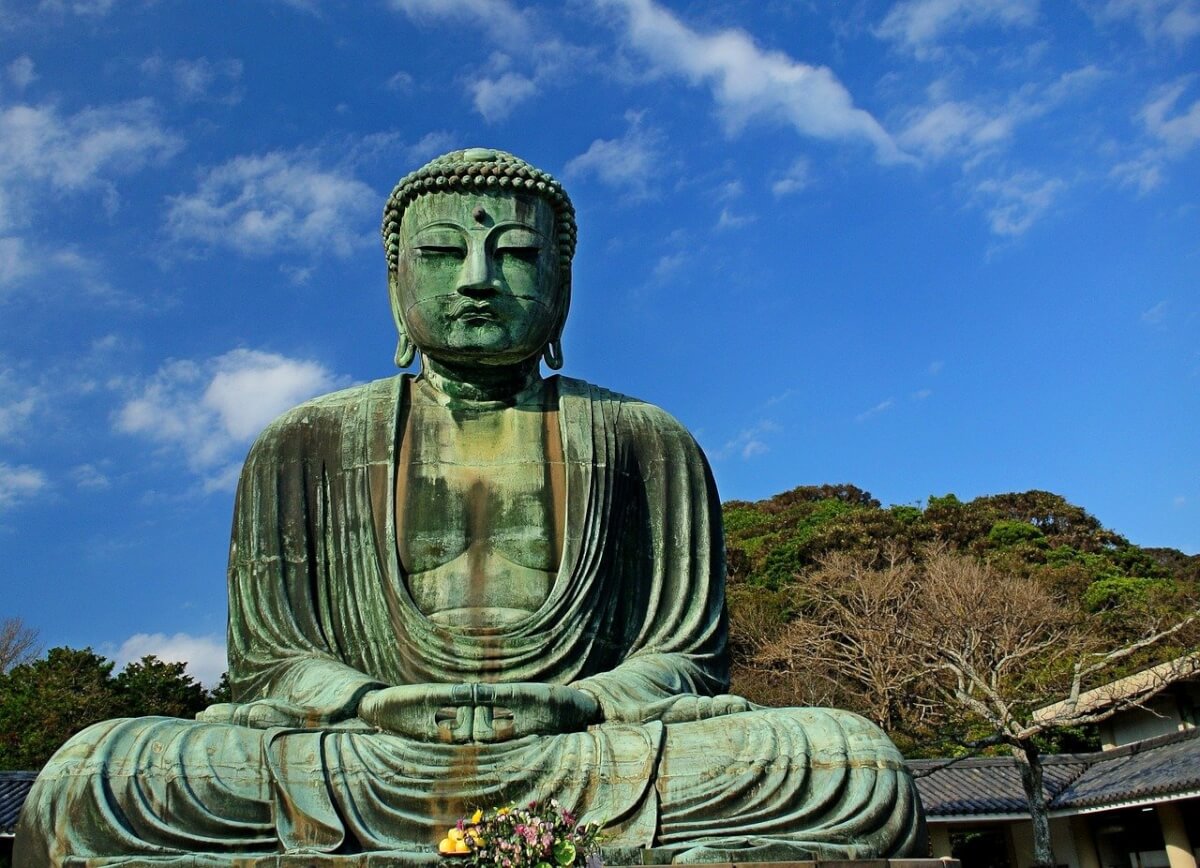Torii gates are most often seen at Shinto shrines. They are considered to be the division between the sacred precincts of the shrine and the human world. In many Japanese shrines dedicated to the deity called Inari, who is the deity of agriculture. You can find the paths lined with many brilliant vermilion torii gates. These torii gates are donated by individuals and companies after the fulfillment of a wish. Some shrines are famous for the great number of torii gates and others are popular for the beautiful scenery. In this article, we introduce shrines which have many torii gates. They are also photogenic and impress travelers.
Read this article about how to pray at Japanese Shinto shrine before you visit and learn the basic rules and manners to keep in mind when you visit Shinto shrines in Japan.
1. Fushimi Inari Shrine
Fushimi Inari Shrine, located in southern Kyoto, is the central location for several thousands of shrines dedicated to Inari, the Shinto god of rice harvest, commerce and business. The original structures of the shrine were constructed in 711 to enshrine the deity “who feeds, clothes and houses us and protests us so that all of us may live with abundance and pleasure”. The current main shrine hall was constructed in 1499, and the current main gate at the bottom of the hill was built in 1589.
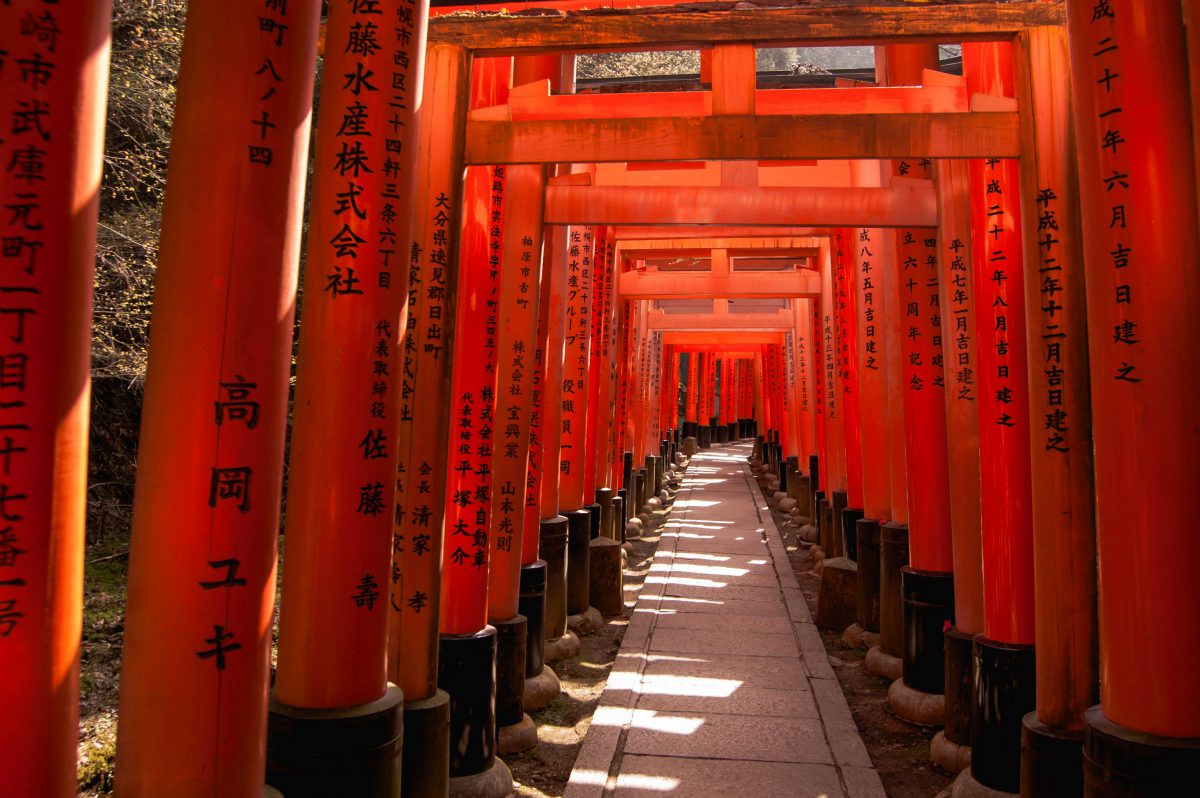
What makes this shrine so popular with tourists from all over the world is the winding path of over 5,000 bright vermilion torii gates behind the shrine buildings. This trail with arcades of vermilion torii gates is the Fushimi Inari pilgrimage hike which stretches about 5 kilometers from Keihan Fushimi Inari Station or JR Inari Station to near the top of Mount Inari-san.
Because of its high popularity, Fushimi Inari Shrine is quite crowded throughout the year. The shrine is open 24/7, so you can visit anytime of the day. If you want to avoid a huge crowd, we recommend you to visit early in the morning or in the evening after sunset. If you arrive before 8:00am or after 8:00pm, it is likely that there are much less tourists than other times of the day. In addition, in the evening, the shrine is especially beautiful with lights.

Access
Fushimi Inari Shrine is located just outside JR Inari Station, the second station from Kyoto Station along the JR Nara Line. The shrine can also be reached in a short walk from Fushimi Inari Station along the Keihan Main Line.
2. Nezu Shrine
Established in 1705, Nezu Shrine is one of the oldest shrines in Tokyo. Nearly all of Nezu Shrine’s structures remain from when they were built or rebuilt in 1706, and they are designated Important Cultural Properties of Japan.
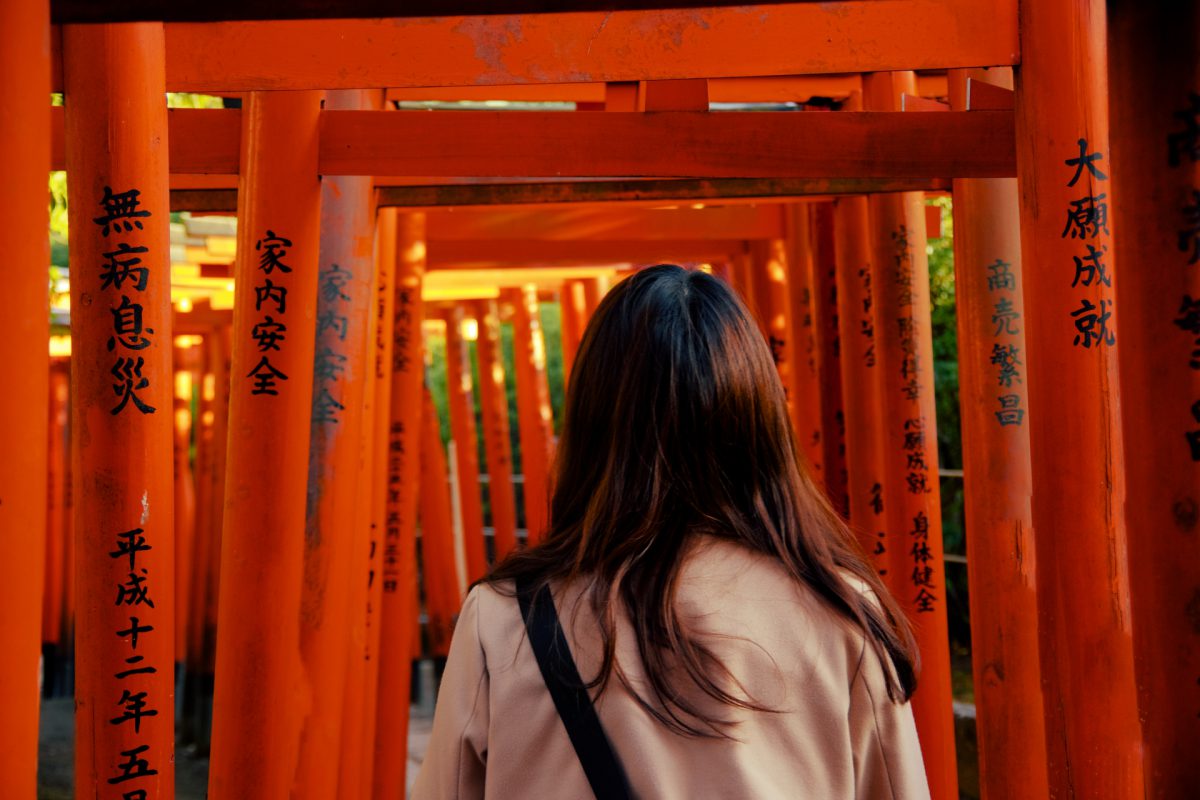
One of the most famous features of the shrine is the path of vermilion torii through the hillside left of the main hall. In the middle of the path there is a viewing platform over a pond of carp, overlooking the main shrine precincts.
Nezu Shrine is famous for its Azalea Festival (Tsutsuji Matsuri) which is held on its grounds from early April until early May.
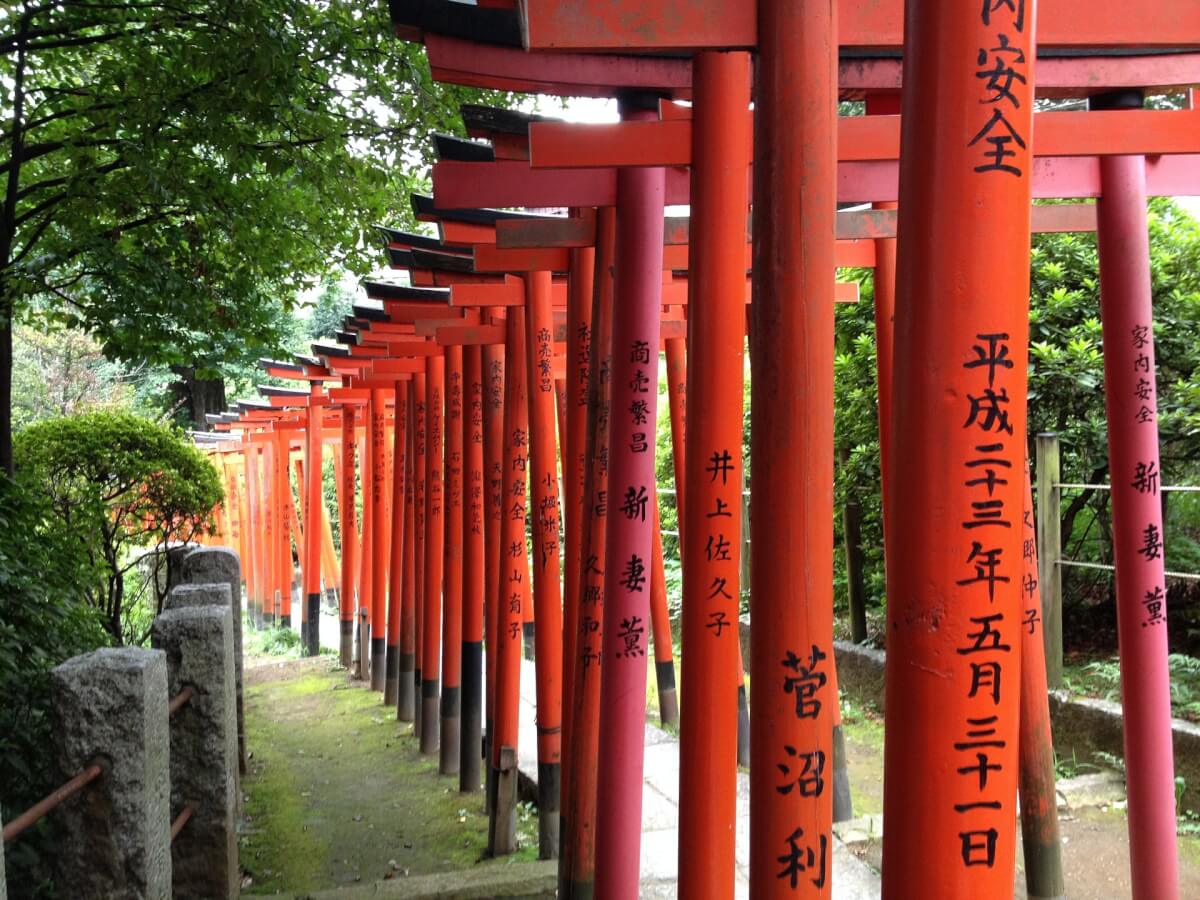
Access
5minute walk from Nezu Station on the Chiyoda Subway Line or Todaimae Station on the Namboku Subway Line.
9 minute walk from Sendagi Station on the Chiyoda Subway Line.
3. Koizumi Inari Shrine
Koizumi Inari Shrine is located in the Gunma Prefecture, north of Tokyo. It features over 200 large and small torii gates on its shrine ground, including the largest torii gate (about 22 meter tall) in the Gunma Prefecture. At the entrance of the shrine ground, you will find three paths arcaded with vermilion torii gates, all of which will lead you to the main shrine hall.
The area where the largest torii gate stands is famous for cosmos from mid- through late October.

Access
32 minute walk from Smark Isezaki bus stop
40 minute walk from Nitta Akatsuki Koko bus stop
42 minute walk from Watauchi Gyosei Center bus stop

4. Motonosumi Shrine
Motonosumi Shrine was established in 1955 and now is one of the most well-known locations in Yamaguchi Prefecture.
Facing the Sea of Japan, the secluded shrine boasts 123 torii gates. They are all lined up along a footpath, which stretches over 100 meters, leading to the shrine. Most of the gates originally came from its sister shrine Daikondani Inari Shrine in the Shimane Prefecture.
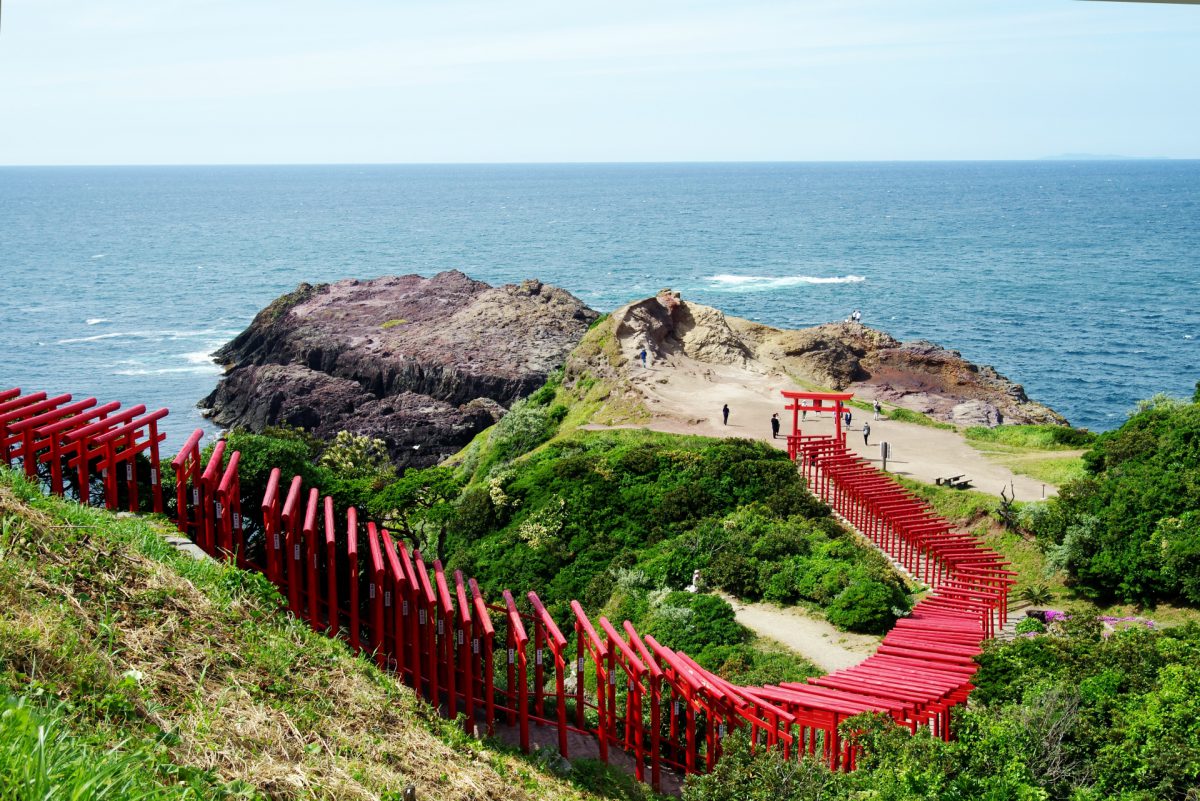
One of the unique features of visiting this shrine is the offering box. Offering boxes are normally placed on the ground near the main shrine building. But here, the offering box is hung at the very top of the torii gate, making it difficult for visitors to toss the coin into the box. If you can successfully throw the coin into the offering box, it is said your wishes will come true!
Along the cliffside next to the shrine you get a gorgeous view of the ocean.

Access
By taxi, it takes about 20 minutes from Nagato-Furuichi Station or 40 minutes from Nagato-shi Station.
5. Ukiha Inari Shrine
Located in the peaceful town of Ukiha in southeastern Fukuoka Prefecture, Ukiha Inari Shrine welcomes you with a long line of 91 vermilion torii gates running along the steep slopes of the mountainside. Enjoy a stunning view as you ascend the 300 steps under the gates lining the approach to the shrine.
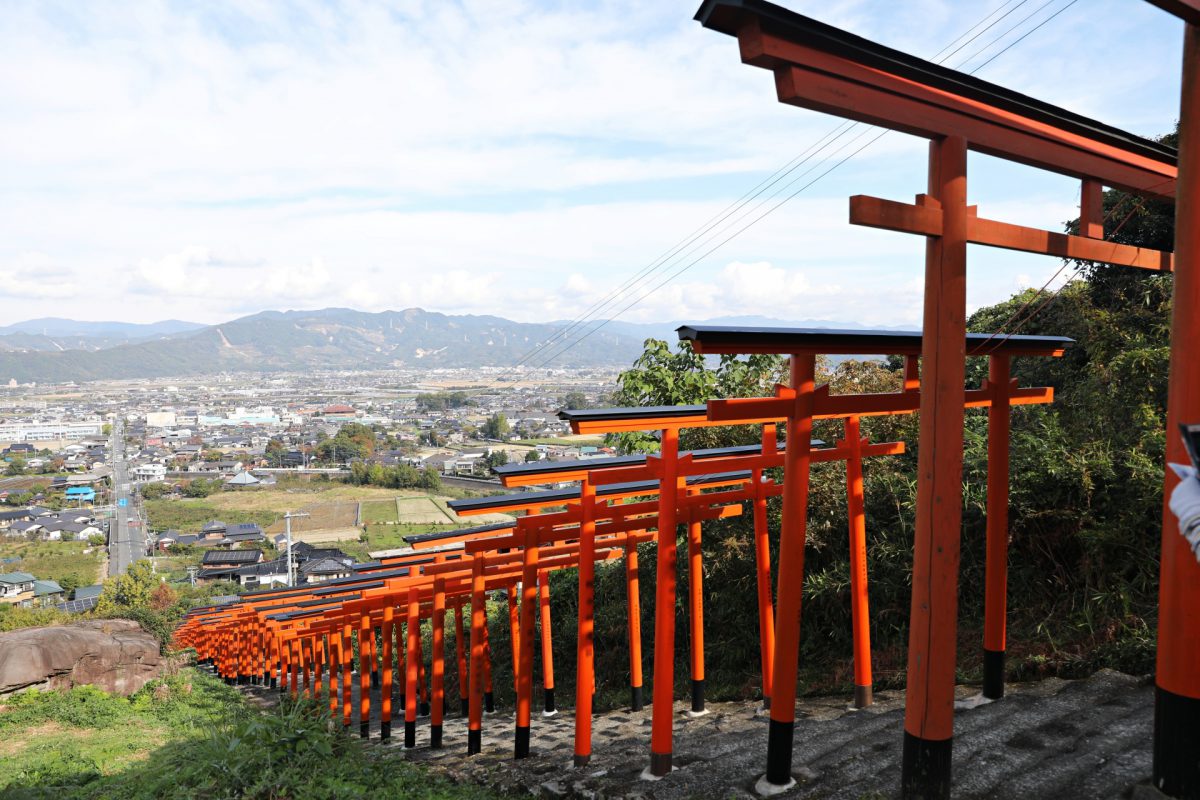
The shrine has a long and distinguished history, dedicated to the three respective deities of Kyoto’s Fushimi Inari Shrine and Matsuo Taisha, and Fukuoka’s Dazaifu Tenmangu Shrine who are known for business prosperity, abundant crops, traffic safety, health, longevity and academic achievement. The main shrine lies at the end of the torii gates.
The shrine is especially popular during the season of sakura (cherry blossoms) in spring.

Access
25 minute walk from JR Ukiha Station.
Take the Nishitetsu bus #20 to from Nishitetsu-Kurume bus stop to Takeshige bus stop and then walkabout 2 to 3 minutes to the shrine.
6. Hie Shrine
Located in central Tokyo, Hie Shrine has been worshiped as the spiritual guardian of Edo Castle ever since the castle was created in the 15th century. Even after the feudal times ended and the Edo castle was turned into the Imperial Palace, it was regarded as the spiritual protector of the palace.
The shrine used to have a set of beautiful buildings which were authorized as National Treasures, however, almost all the buildings were lost in WWII, and the present shrine buildings were constructed in 1958 with contributions from numerous parishioners and worshippers.
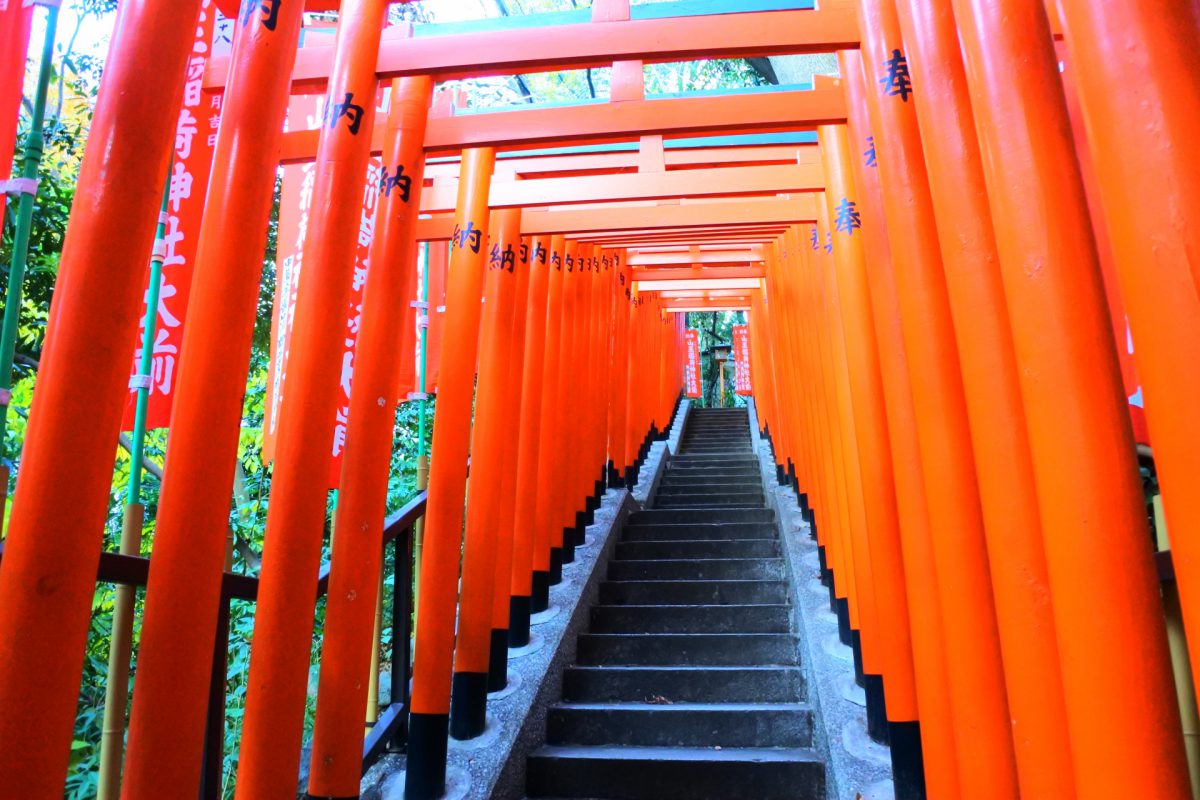
After passing a large black torii gate standing at the foot of a hill, there are three entrances to stairs which go up to the main shrine hall. One of the paths that is relatively narrow upstairs is lined with many torii gates. On top of the stairs, you will face the subordinate shrine before getting to the main one.

Access
3 minute walk from Akasaka Station on the Chiyoda Subway Line, or Tameikesannno Station on the Nanboku Subaway Line and Ginza Subway Line.
5 minute walk from Kokkai-gijido-mae Station on Chiyoda Subway Line
8 minute walk from Akasaka-mitsuke Station on Ginza Subway Line and Marunouchi Subway Line
Japan Wonder Travel Tours
We offer a full day private tour at popular destinations. Let’s explore the area with a knowledgeable English speaking guide and listen to the background stories of the area.
Follow us on Instagram or Facebook for more travel inspiration. Or tag us to get featured!
Happy travelling!
Stay informed of the best travel tips to Japan, the most exciting things to do and see, and the top experiences to have with the Japan Wonder Travel Newsletter. Every week we will introduce you to our latest content.
Other articles you might like




